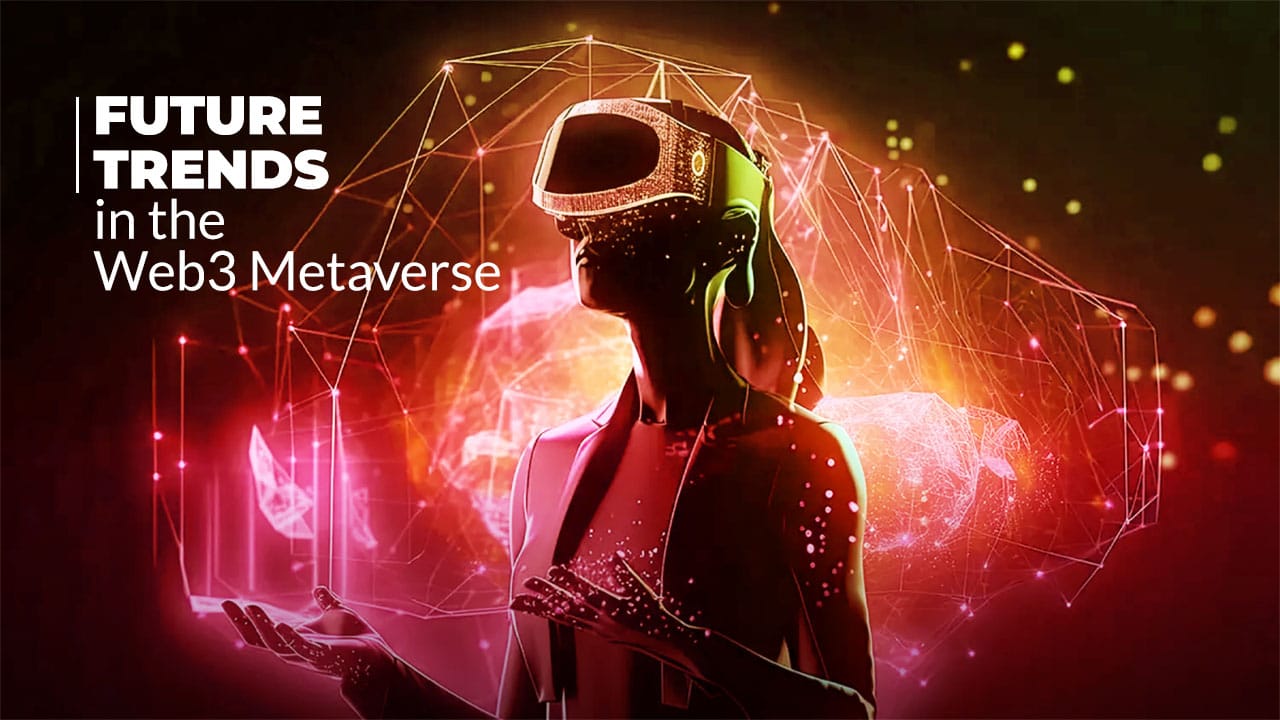The Web3 Metaverse is evolving at a breakneck pace, transforming how people interact, transact, and experience digital spaces. Unlike the traditional internet, Web3 is powered by blockchain, decentralization, and immersive technologies, creating a virtual ecosystem where users have true ownership and control over digital assets.
As we move deeper into this new era, it is crucial to explore the future trends in the Web3 Metaverse that will shape digital economies, social interactions, and technological advancements.
This article dives into five major future trends in the Web3 Metaverse that are set to redefine virtual worlds, from decentralized economies to AI-driven experiences.
Whether you are an investor, developer, or metaverse enthusiast, staying ahead of these trends will give you an edge in this rapidly expanding digital frontier.
Additionally, we will highlight key industry players, real-world examples, and relevant statistics to back up these insights.
1. Decentralized Virtual Economies Will Take Center Stage
One of the most significant future trends in the Web3 Metaverse is the rise of decentralized virtual economies.
Traditional gaming and social platforms operate within closed ecosystems, but Web3 enables borderless digital transactions, empowering users to monetize their assets and contributions.
The Rise of Blockchain-Powered Digital Assets
Blockchain technology underpins the decentralized nature of the Web3 Metaverse, ensuring transparency, security, and immutability. Key components include:
- Non-Fungible Tokens (NFTs): Digital assets representing unique items, such as virtual real estate, avatars, and rare collectibles.
- Play-to-Earn (P2E) Models: Games that reward players with cryptocurrency and NFTs, allowing real-world value exchange.
- Tokenized Assets: Virtual properties, in-game currencies, and digital wearables that hold intrinsic market value.
- Metaverse Marketplaces: Platforms like OpenSea and Rarible facilitate seamless digital asset trading.
Key Benefits of Blockchain-Powered Digital Assets
| Feature | Benefit |
| Ownership | Users have full control over digital assets |
| Security | Immutable and fraud-resistant transactions |
| Liquidity | Easy asset trade in decentralized markets |
| Interoperability | Digital items can be used across platforms |
| Transparency | Transactions are publicly verifiable on the blockchain |
How DAOs Will Transform Governance?
Decentralized Autonomous Organizations (DAOs) are reshaping the governance of virtual worlds by enabling community-driven decision-making.
These organizations empower users to vote on development, economic policies, and platform upgrades, making the metaverse more democratic and user-centric.
Examples of DAOs in the Metaverse
- Decentraland DAO: Allows users to vote on policies regarding virtual land and experiences.
- Axie Infinity DAO: Enables community governance in a play-to-earn ecosystem.
- The Sandbox DAO: Manages virtual asset ownership and metaverse policies.
- Aavegotchi DAO: Facilitates decentralized governance for metaverse-based DeFi experiences.
2. AI-Driven Metaverse Experiences Will Enhance Interactivity
Artificial Intelligence (AI) is rapidly becoming one of the most influential future trends in the Web3 Metaverse, enhancing engagement and realism through personalized interactions and immersive storytelling.
The Role of AI in Digital Avatars and NPCs
AI-driven avatars and Non-Player Characters (NPCs) in the Web3 Metaverse are becoming more sophisticated, providing:
- Adaptive Learning: NPCs that evolve based on user interactions.
- Emotional Intelligence: AI-driven avatars capable of expressing human-like emotions.
- Realistic Virtual Assistants: AI bots that facilitate trade, conversation, and experiences.
- Procedural Content Generation: AI that dynamically creates environments, storylines, and characters.
Key AI Advancements in the Metaverse
| Feature | Impact |
| AI Chatbots | Enhances real-time communication |
| Machine Learning | Personalizes content and recommendations |
| AI Avatars | Mimic human emotions and interactions |
| Generative AI | Creates dynamic virtual environments |
| AI-powered Moderation | Detects and removes harmful content |
Personalized and Immersive AI-Powered Content
With AI’s deep learning capabilities, content in the Web3 Metaverse will be hyper-personalized, allowing:
- Real-time adaptive storytelling.
- AI-generated landscapes that adjust to user preferences.
- Predictive algorithms to customize user experiences.
- AI-driven NPC companions that evolve based on user behavior.
Example: AI in Virtual Worlds
- Meta’s Horizon Worlds: Uses AI for real-time avatar interactions.
- Somnium Space: Implements AI-driven NPCs to enhance social experiences.
- Ready Player Me: AI-powered avatar customization platform.
- Alter: AI avatars that provide personalized companionship in the metaverse.
3. Interoperability Will Redefine the Metaverse Experience
Interoperability is a crucial element of the future trends in the Web3 Metaverse. Users want seamless movement between virtual platforms without restrictions.
The Shift Toward Cross-Platform Integration
Currently, the metaverse operates in silos, but interoperability will change this by:
- Enabling avatars and assets to be used across multiple virtual worlds.
- Allowing different blockchain ecosystems to communicate via cross-chain technology (e.g., Polkadot, Cosmos).
- Establishing metaverse-wide economies where users can trade and interact without boundaries.
Technologies Enabling Interoperability
| Technology | Function |
| Cross-Chain Bridges | Connects different blockchains |
| Decentralized Identity (DID) | Single digital identity across platforms |
| Open Metaverse Protocols | Standardizes asset interoperability |
| Smart Contracts | Automates transactions between platforms |
4. Hyper-Realistic Graphics and Immersive Technologies
The future trends in the Web3 Metaverse include major advancements in realism through augmented reality (AR), virtual reality (VR), and 3D spatial computing.
The Role of AR/VR in Shaping Next-Gen Metaverse Worlds
Technologies such as:
- Virtual Reality (VR): Provides immersive 3D worlds with ultra-realistic environments.
- Augmented Reality (AR): Blends real and virtual elements seamlessly.
- Mixed Reality (MR): Integrates AI-driven overlays for deeper interactivity.
- Volumetric Video Capture: Captures real-world movements for realistic avatars.
Examples of Advanced Metaverse Graphics
| Company | Innovation |
| Nvidia | AI-powered 3D rendering |
| Unity | Real-time AR/VR development |
| Unreal Engine | Photorealistic game engine |
| Microsoft Mesh | Mixed Reality collaboration platform |
Takeaways
The future trends in the Web3 Metaverse are poised to reshape digital interactions, economies, and experiences.
With advancements in decentralization, AI, interoperability, realism, and sustainability, the Web3 Metaverse is not just a futuristic concept—it is an inevitable reality.
As we move forward, businesses, developers, and users must adapt to these changes to harness the full potential of this revolutionary digital landscape.
The question is no longer if the Web3 Metaverse will dominate the digital sphere but how soon it will become an integral part of our daily lives. Are you ready to step into the future?










































